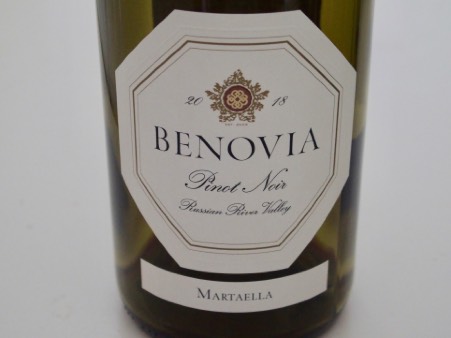PinotFile: 12.11 December 16, 2020
|
Benovia Winery: Pinot Noir Fireworks on the Winery’s 15th Anniversary
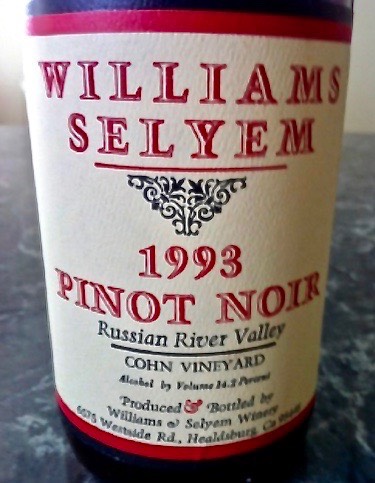 The winery officially launched in 2005 when Joe and Mary purchased the 18-acre Hartman Lane Vineyards and Winery from Cecil De Loach. This winery property, located in the heart of the Russian River Valley, was originally established by Merry Edwards who crafted wine there under the Merry Vintners label. The new property included a dated winery and 13.5 acres of Pinot Noir. The vineyard was named Martaella Estate after Joe and Mary’s mothers, Martha and Eleanor. The winery was christened “Benovia,” a merger of the first names of Mary’s father, Ben, and Joe’s father, Novian. Joe and Mary then teamed up with veteran Russian River Valley winemaker Michael Sullivan who joined the winery as a partner to lead the winemaking, vineyard development and management of the winery. Michael grew up in the Russian River Valley, obtained a degree in fermentation science from California State University, Fresno, and began crafting wines in the Russian River Valley in 1987 and later built a reputation for brilliant Pinot Noirs at Hartford Family Winery. In 2008, Benovia acquired an adjacent 40-acre horse ranch and planted 9 clones and heirloom selections of Pinot Noir and 4 clones of Chardonnay at high density (2200 to 2700 vines per acre). Incorporating the original Pinot Noir plantings, the estate Martaella Vineyard totaled 42 acres of Pinot Noir and Chardonnay. In 2009, Benovia planted the 16-acre Tilton Hill Estate Vineyard located in the West Sonoma Coast near Freestone, a high-risk, high-reward site. This brought Benovia to 71 planted acres across 3 estate vineyards. By 2015, each of the estate vineyards, Cohn, Martaella and Tilton Hill, had become certified sustainable with the Cohn Estate Vineyard achieving certified organic farming status. A map showing the location of Benovia estate vineyards and vineyards sourced:
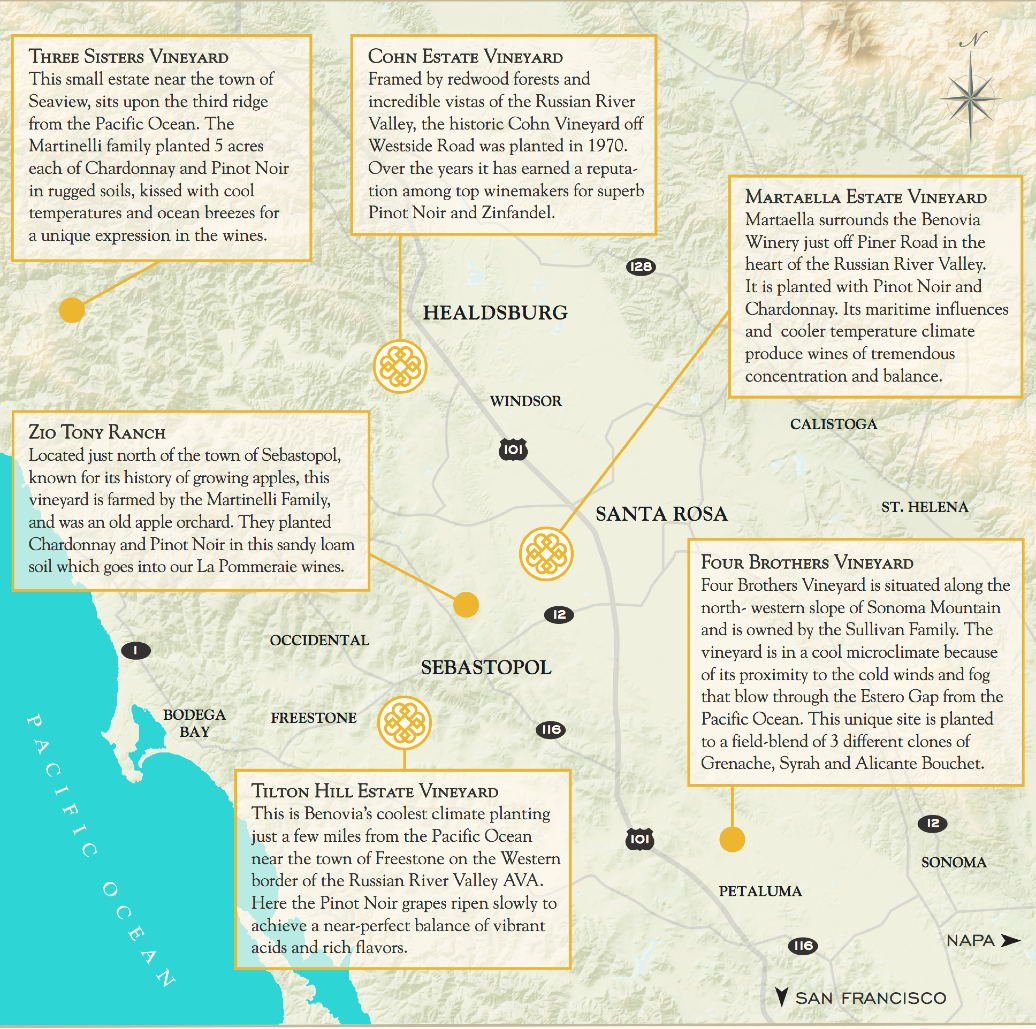 I have closely followed Benovia Winery since its inaugural 2005 commercial releases and have tasted every Pinot Noir released since then. Winemaker Michael Sullivan had to make due initially with an aged winery, less than optimum equipment and primarily purchased grapes. Undaunted, he continued to adapt and reshape his winemaking and viticultural goals. Today, Benovia has a modern new winemaking facility dedicated to Pinot Noir (photo below) and has transitioned to nearly all estate-grown wines (purchased grapes come from Martinelli-farmed properties). Although Michael would be the first to admit that perfection is unobtainable, the Pinot Noir wines he has crafted, particularly since the new winery opened in 2015, have been exceptional and garnered consistently lofty scores.
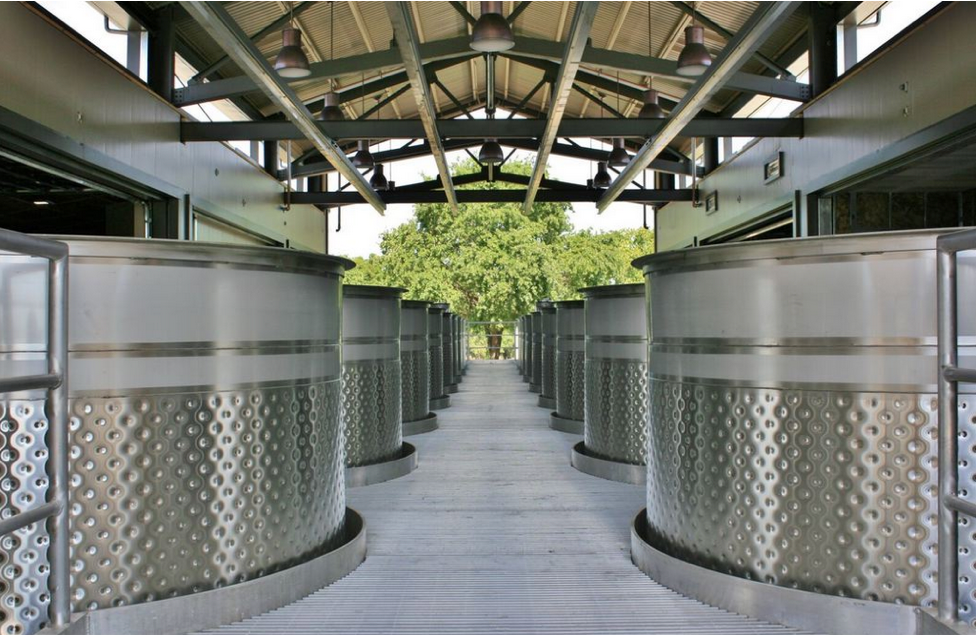 The following reviewed wines are from the 2018 vintage. Michael calls the vintage “a return to normal” in that the weather pattern was consistent with what is expected for Sonoma County. Almost ideal conditions during flowering led to a generous cluster count and practically no shatter. The summer weather was ideal, with cold and foggy mornings where the sun did not peak through the marine layer until mid-day. The harvest conditions were quite cool and the vintage will be remembered for extended ripening and exceptionally long hang times. Michael’s Pinot Noir winemaking is straightforward. The grapes are gently de-stemmed after careful hand sorting. A small and variable amount of whole cluster is included in the ferments. Following a cold soak of 5-8 days, indigenous yeast completes primary fermentation. The must is moved to roughly one-third new French oak barrels and inoculated for malolactic fermentation with weekly lees stirring. The wines are typically aged for 16 months. Today, Benovia produces 10,000 cases of Pinot Noir, Chardonnay, Zinfandel, Rosé, sparkling Blanc de Blancs and Grenache. The wines are sold primarily through a mailing list and on the winery’s website at www.benoviawinery.com. Ground shipping included with all purchases until December 31, 2020. Tasting is available when COVID-19 regulations allow at the winery’s Ranch House hospitality center in Santa Rosa by appointment. Virtual tastings are also available. Join in at one of the many events held by the winery and get to know the very personable Michael Sullivan. If you have any special requests, contact Robin Jackson, Director of Operations, and tell her I referred you! The marvelous Pinot Noir wines reviewed here are from Benovia’s 2018 vintage Fall Release.
2018 Benvoia Courageous Care Russian River Valley Pinot Noir
14.1% alc., pH 3.65, TA 0.60, 94 cases,
$40. A blend crafted to memorialize Margaret Foley and all first responders. Sourced from two of Benovia’s
estate vineyards. Heirloom Pinot Noir clones, several of which were fermented 25% whole cluster. Released
July 2020. Aged 16 months in French oak barrels, 45% new. A percentage of sales will be donated to Feeding
American and Direct Relief.
·
Moderately dark garnet color in the glass. The nose offers a blend of black cherry,
cardamom spice and toasty oak aromas. Mid-weigh plus in concentration featuring a core of blackberrypomegranate
fruit accented with oak-driven dark caramel flavor. Modest tannins make for easy early drinking.
Satisfying, with a giving finish, but the oak treatment is a bit heavy-handed.
Score: 89
2018 Benovia Three Sisters Fort Ross-Seaview Pinot Noir
14.1% alc., pH 3.68, TA 0.54, 87 cases, $90.
Released fall 2020. 8-day cold soak, indigenous yeast primary fermentation, 20% whole cluster, aged 16
months in 100% new French oak barrels. Sourced from Lee Martinelli Jr. Three Sisters Vineyard.
·
Moderately
light garnet color in the glass. Quite fragrant in the glass with the scent of cherry, strawberry, rose petal and
forest floor. Soft and sleek in character in a mid weight style featuring flavors of red cherry, strawberry and
spice. Very gentle, sliding off the palate like a silk sheet. Timid tannins but enough to provide balance. Quite a
change-up from the other more powerful 2018 Benovia vineyard-designated wines yet satisfies in its own way
and is very giving now.
Score: 93
2018 Benovia La Pommeraie Russian River Valley Pinot Noir
14.5% alc., pH 3.61, TA 0.56, 490 cases,
$65. Released fall 2020. Sourced from George Martinelli Zio Tony Vineyard. Dijon clones 777 and “828.” Once
an apple orchard, the name ‘La Pommeraie’ (French for apple orchard) pays homage to the Martinelli family
and the history of the site.
·
Dark garnet color in the glass. A little rustic and tightly wound at this stage. The
primary aroma is earthy flora with only a touch of black raspberry. Mid-weight plus in concentration, with earthtoned
flavors of boysenberry, blueberry and pomegranate. Satiny in texture, with notable but not intrusive
tannins and a crazy long finish. Slightly more giving when tasted the following day from a previously opened
bottle. Did I mention that the finish is outrageously long? Cellar this beauty for the future. For now
Score: 92
2018 Benovia Tilton Hill Estate Sonoma Coast Pinot Noir
14.4% alc., pH 3.56, TA 0.60, 540 cases, $65.
Released fall 2020.6-day cold soak, indigenous yeast primary fermentation, aged 16 months in French oak
barrels, 40% new.
·
Dark garnet color in the glass. The nose brought me close to ecstasy with aromas of
boysenberry pie, forest floor and tobacco. Mid-weight plus in
style, with a compelling core of zestful blue and purple berry
fruits framed by gentle tannins and redeeming acidity. Velvety in
texture, with a lifted finish that fails to yield for quite some time.
A big boy wine that finds cohesive elements that come together
even better when tasted the following day from a previously
opened bottle.
Score: 94
2018 Benovia Martaella Estate Russian River Valley Pinot
14.3% alc., pH 3.62, TA 0.58, 289 cases, $65. Released
fall 2020. 8-day cold soak, indigenous yeast primary
fermentation, aged 16 months in French oak barrels, 38% new.
·
Dark garnet color in the glass. Deep, seductive aromas of black
cherry, cassis and spice. A terrific burst of purple and black fruits
greet the palate and persist through a hearty mid-palate and
lengthy finish. Perfectly balanced, slightly creamy in the mouth
with the best of both worlds - power and elegance. When tasted the following day from a previously opened
and re-corked bottle, the wine was still mesmerizing. The best Pinot Noir I have ever tasted from this vineyard.
Score: 96
2018 Benovia Bella Una Russian River Valley Pinot Noir
14.5% alc., pH 3.61, TA 0.59, 160 cases, $85.
Released fall 2020. Sourced from Martaella Estate, Tilton Hill Estate and Zio Tony Ranch. The winemaker only
selects barrels that reflect what he feels are the best expression of the vintage. 8-day cold soak, indigenous
yeast primary fermentation, aged 16 months in French oak barrels, 40% new.
·
Dark garnet color in the glass.
The nose opens slowly to reveal alluring aromas of blackberry, black cherry and cardamom spice. Very
polished in the mouth, with black cherry and blackberry fruit galore. The wine finds good balance among the
unctuous fruit, tannins and acidity. Even more fruit expression and charm when tasted the following day from a
previously opened and re-corked bottle. This one will wow you especially after another couple of years in the
cellar.
Score: 94
2017 Pisoni Estate Pinot Noir Leads Me to a Mini-epiphany
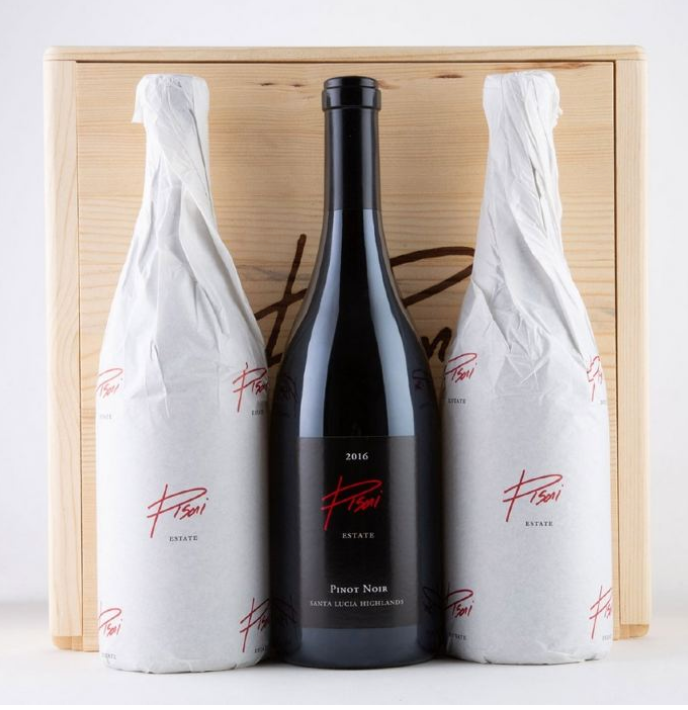 The triumvirate behind Pisoni Vineyards includes Gary Pisoni, who planted his first five acres of own-rooted Pinot Noir (Burgundy) cuttings reportedly suit-cased from Vosne-Romanee in 1982. He had difficulty convincing his father that planting grapevines in the highlands above the family farm was a good idea. So he planting his first grapevines while his parents were away on vacation. Today, 36 acres are thriving with 30 individually hand farmed blocks and the grapes are highly prized. Cuttings from the Pisoni Vineyard have never been distributed except to vineyards in the Santa Lucia Highlands that Gary has part ownership or ones in which the owner has a very close relationship. The other members of the triumvirate include Gary’s sons, Jeff, who is the winemaker for Pisoni wines, and Mark, who is the viticulturist at Pisoni Vineyards. The triumvirate is pictured below (from left to right, Jeff, Mark, Gary Pisoni).
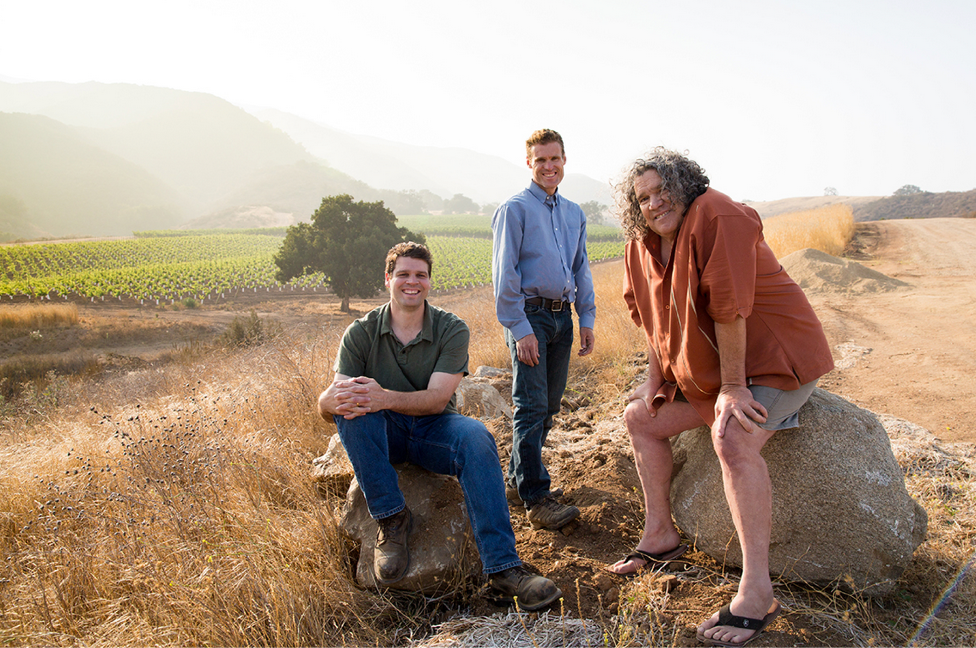 Regular readers of the PinotFile know that I have been enamoured with Pisoni Pisoni for many years. In 2017, I reported on a vertical tasting of 2004-2014 vintages of Pisoni Estate Pinot Noir: www.princeofpinot.com/ article/1803/. Subsequently, I have rated the 2015 vintage 96 ( “I rarely encounter a domestic Pinot Noir with this length of finish”), the 2016 vintage 96 (“a distinctive wine that has no peer”) and the 2017 vintage 95. When I sampled the 2017 vintage in June 2019, I noted, “Needs more time in the cellar to fully assimilate the tannins, find full fruit expression, and reach an orgasmic level.” This prelude brings us to November 2020, about 16 months later, when I again opened a bottle of 2017 Pisoni Estate Pinot Noir.
2017 Pisoni Pisoni Estate Santa Lucia Highlands Pinot Noir 14.1% alc., 725 cases, $90. After opening the bottle, I noted, · Moderately dark garnet color in the glass. Plenty of dark berry fruit to satisfy with complacent tannins and an unusually long finish. Excellent but not extraordinary. The wine was a bit rustic and subdued and I was wishing for more. I corked the bottled and waited a day. The next day it was like an angel had descended from the heavens to infuse the wine with glorious appeal. The texture was unbelievably dreamy, the fruit had an elevated purity and I kept looking at the glass as if I could not believe what I was drinking. I have rarely experienced the feeling that overcame me, and I understood why so many have been challenged to adequately express the appeal of a special Pinot Noir. The wine tasted of perfection but I could not condescend because the Holy Grail must remain sacred. Score: 98
2018 Pisoni Pisoni Estate XX Anniversary Santa Lucia Highlands Pinot Noir 14.1% alc., $90. 20th vintage. · Moderately dark garnet color in the glass. The nose opens slowly with air, revealing aromas of black cherry, blackberry, spice cake and a hint of oak vanillin. Mid-weight plus in style, with an assortment of luscious black fruit including ollaliberry and blackberry. silken in texture with tame tannins and beautiful harmony. Boisterous fruit (like biting into a juicy, perfectly ripened blackberry) but not jammy, with just the faintest touch of cedary oak. When tasted the following day from a previously opened and re-corked bottle, the wine was unchanged. The wine will undoubtedly benefit from another year or two in the cellar. Not quite the seductive texture and mesmerizing charm of the 2017 vintage, but a grand wine in its own right. Score: 96
Read more about Pisoni Vineyards at www.pisoninotes.com and join the mailing list at www.pisonivineyards.com. Production is extremely limited so that it may take a few seasons before you will be allocated wine. Find the wine on the secondary market at www.wine-searcher.com.
Note: Pisoni also produces very small quantities of highly lauded Chardonnay. Four individual blocks are planted to Wente clone and suitcase clones crafted in a fleshy California style. I believe Chardonnay grapes are only sold to Roar, Testarossa and Paul Lato, whose “East of Eden” Pisoni Vineyard Chardonnay is a favorite of mine. This last Thanksgiving as a prelude to dinner, I opened a magnum of the 2017 vintage and this wine was stunning. I would rate it 96. The Pisoni Vineyard Chardonnay can be bought online at www.winesearcher. com.
Featured Winery: Wrath Wines
The 68-acre site, previously planted to Merlot and Cabernet Sauvignon, was replanted with the assistance of noted local winegrower Steve McIntyre. San Saba Vineyard is a cool site with little rainfall and one of the longest growing seasons in the world. Arroyo Gravelly Loam and Hanford Gravelly Loam soils provide a low vigor, well-draining, disease and pest-free medium for the vines. With the assistance of viticultural consultant Steve McIntyre, a sustainable farming program has been developed and the vineyard is SIP certified. The winemaker is Sabrine Rodems, a UC Davis graduate in viticulture and enology and Byron Kosuge is the consulting winemaker. The winery’s initial releases were in April 2009. The wines are sold primarily through a mailing list at www.wrathwines.com and select retail outlets. A tasting room is located in Soledad and Carmel, with outdoor tasting available at both locations during the pandemic. This is my first exposure to the wines from this winery. The winery’s EX bottling (1680 cases, $29) was featured in the last issue of the PinotFile focused on domestic Pinot Noir wines priced under $30.
2019 Wrath Saignée Monterey Pinot Noir 13.2% alc., 197 cases, $21. 100% clone “828.” Grapes are from San Saba Vineyard. A bleed off of clonal pinot lots. Aged 1 month in neutral French oak barrels. · Moderately dark pink salmon color in the glass. Inviting aromas of strawberry, red cherry and wildflower honey. A somewhat hearty rosé featuring flavors that echo the nose plus notes of watermelon and blood orange. Brisk acidity, with a satisfying, lip-smacking finish. Score: 89
2018 Wrath 115/667 Monterey Pinot Noir 14.5% alc., pH 3.71, TA 0.60, RS 0.01, 679 cases, $35. Estate grown grapes from San Saba Vineyard. 50% each 115 and 667. 16% whole cluster. Aged 11 months in an assortment of French oak barrels, 20% new, and rested in bottle for an additional 12 months before release. · Moderate garnet color in the glass. Aromas of black cherry and dark red rose petal lead to a richly flavored mid-weight wine featuring a core of black cherry and blackberry fruit flavors with an appealing earthy bent. Well-managed barrel treatment and a satisfying finish of some length. Excellent value. Score: 92
2018 Wrath Pommard 4/777 Monterey Pinot Noir 14.5% alc., pH 3.73, TA 0.62, RS 0.01, 677 cases, $35. 50% each Pommard 4 and 777. 20% whole cluster fermentation. Aged 11 months in French oak barrels, 24% new, and then laid down for an additional 12 months of aging before release. · Moderately light garnet color in the glass. Very enticing aromas of dark cherry, raspberry and floral goodness. The flavors replicate the aromas with a touch of oak in the background. Suave in texture with minimal tannins and a modest finish. Score: 90
2018 Wrath Boekenoogen Vineyard Santa Lucia Highlands Pinot Noir 14.2% alc., pH 3.76, TA 0.58, RS 0.01, 381 cases, $49. This 100-acre family vineyard was established in 1998 by John Boekenoogen. The family’s cattle business has existed for five generations in the Salinas Valley. 50% 115 and 50% 113. 3-day cold soak, 20% whole cluster fermentation, aged 10 months in French oak barrels, 30% new, and laid down for another 12 months of barrel aging before release. · Moderate garnet color in the glass. Earth-kissed aromas of black cherry, black licorice and seasoned oak. A dreamy texture captures attention upon entry. Somewhat shy, offering mid-weight flavors of black fruits framed by tame tannins. Needs more time in the cellar. Score: 91
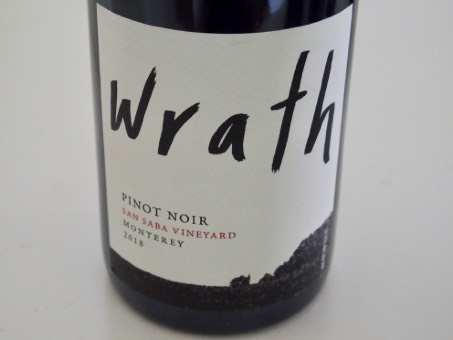 2018 Wrath San Saba Vineyard Monterey Pinot Noir 14.2% alc., pH 3.77, TA 0.60, RS 0.01, 404 cases, $49. Yields 3.5-4.0 tons per acre. Clones “828,” Pommard 4, 667, 777, 115 and Swan selection. 3-day cold soak, 35% whole cluster fermentation, aged 10 months in French oak barrels, 35% new, and laid down for another 12 months of barrel aging before release. · Moderately light garnet color in the glass. Beautifully perfumed nose with aromas of dark Boing cherry, spice and sous-bois. Complex and provocative in a middleweight style with a delicious core of dark cherry and raspberry fruits accented with a hint of spice, dark caramel and earthiness. Admirable balance with welcome finishing persistence. Score: 93
2018 Wrath Tondré Grapefield Santa Lucia Highlands Pinot Noir 14.2% alc., ph 3.77, TA 0.56, RS 0.01, 343 cases, $49. Father Tondré and son Joe Alarid planted the first 6.5 acres of Tondré Grapefield on a gravelly bench above Salinas Valley in the heart of the Santa Lucia Highlands. Today, the 100-acre vineyard is certified sustainable (SIP) source of Pinot Noir for many of California’s top producers. 40% Pommard 4, 40% 115 and 20% 493. 3-day cold soak, 20% whole cluster fermentation, aged 10 months in French oak barrels, 27% new, and laid down for another 12 months of bottle aging before release. · Moderate garnet color in the glass. An array of aromas lead off including cherry spice cabinet, vanilla and sawdust. Noticeable richness and plush on the palate, with flavors of black stone and berry fruits. Boldest of the three 2018 vineyard-designated Pinot Noirs with also more oak in evidence. There is a curious petrol note appearing on the finish. Score: 92
More Additions to Under $30 Pinot Noir Worth Drinking
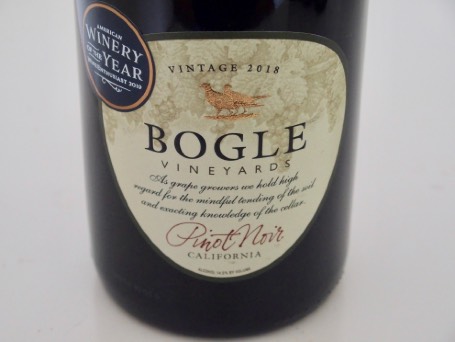 2018 Bogle Vineyards California Pinot Noir 14.5% alc., $8.88 (Pavilions supermarket on bottom shelf). Vinted and bottled by Bogle Vineyards, Clarksburg, CA. Wine Enthusiast American Winery of the Year 2019. · Moderately light garnet color in the glass. Black cherry aroma infused with baking spices and a hint of toasty oak. Flavors of darkest cherry and black raspberry in a light to mid-weight style with a dusting of oak in the background. Silky tannins and easygoing, with a juicy, cherry-fueled finish. Excellent value. Score: 89
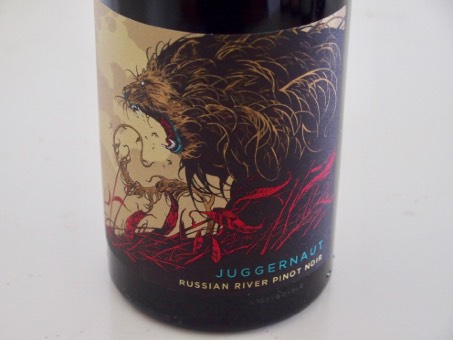 2018 Juggernaut Russian River Valley Pinot Noir 14.5% alc., pH 3.68, TA 0.54, $18.88 (Pavilions supermarket). Produced and bottled by Juggernaut Wine Co, Clarksburg, CA (part of the Bogle Family). Released June 2020. Very attractive label and very heavy bottle. Aged 12 months in both new and used French oak barrels. · Moderately light garnet color in the glass. Pleasant but very demure aroma of black cherry and a hint of toasty oak. Much better on the palate, with mid-weight, flavors of black cherry, raspberry and cola backed by soft tannins. There is a little too much oak in the background most evident on the somewhat lengthy finish. Best when first opened but the nose never really comes alive. I prefer the much less expensive Bogle California Pinot Noir produced by the same company. Score: 88
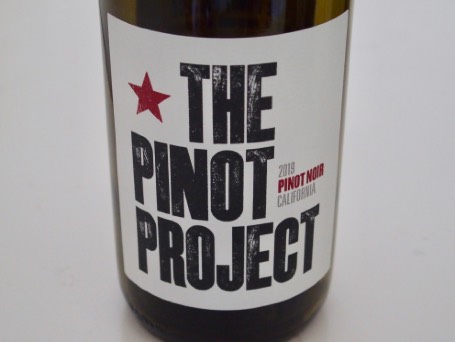 2019 The Pinot Project California Pinot Noir 13.5% alc., $10.99 (Bottle Barn, Santa Rosa). Vinted and bottled by The Pinot Project, Geyserville, CA. · Moderately light garnet color in the glass. Inviting aromas of red cherry, allspice and oak spice. Light to mid-weight in style, featuring flavors of cherry and ripest strawberry with a dustin go oak. No rough edges, with silky tannins and a cherry-fueled finish with some length. Excellent value. Score: 89
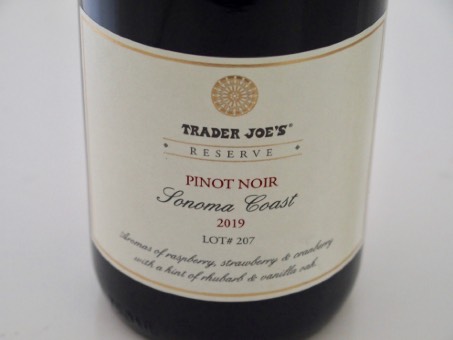 2019 Trader Joe’s Lot #207 Sonoma Coast Reserve Pinot Noir 13.8% alc., $9.99 (Trader Joe’s, various locations). Vinted and bottled by ABJ Wines, Geyserville, CA. (Also, look for “Platinum Reserve” lineup of Pinot Noir from Russian River Valley, Spring Mountain and Sta. Rita Hills, all priced at $14.99. Trader Joe’s Pinot Noir can be hit or miss as the source may be over-produced bulk wine, even declassified wine, acquired from varying sources with each release. · Moderately light garnet color in the glass. This beauty reeks of pinotosity. Moderately light garnet color in the glass. Aromas of strawberry, cranberry and rose petal. Lighter in weight, but packed with delightful black cherry, raspberry and cinnamon spice flavors. Only a phantom touch of oak. Still very good when tasted several hours later from a previously opened bottle. Pour this wine in an expensive empty bottle of Pinot Noir and fool your friends! A total steal at this price. Score: 90
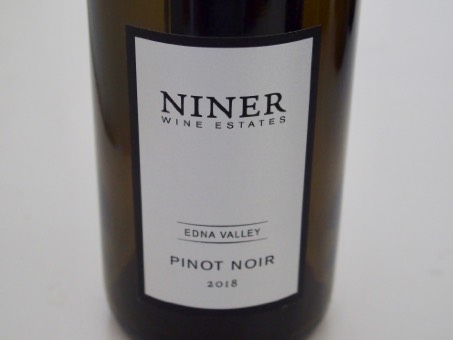 2018 Niner Wine Estates Edna Valley Pinot Noir 14.5% alc., $24.95 (K&L Wines, San Francisco). Produced and bottled by Niner Wine Estates, Paso Robles, CA. Sourced from the familyowned, estate Jespersen Ranch Vineyard that is sustainably farmed. 7 clones. 100% Pinot Noir. · Moderate garnet color in the glass. Effusive aroma of black cherry with a hint of toasty oak. Mid-weight plus core of luscious black cherry and blackberry fruit flavors.The delightful charge of fruit has the support of adequate acidity and complimentary fine-grain tannins. Wellmade with good harmony. Score: 91
CALIFORNIA
Anthill Farms Sonoma Coast Pinot Noir
OREGON
Adelsheim Willamette Valley Pinot Noir
I received an email from www.wineslash.com on November 29. They were selling a 2017 Steele Bien Nacido Vineyard Santa Maria Valley Pinot Noir for $19 (retail $38) The fruit was sourced from the N Block, an very desirable old vine section of Bien Nacido Vineyard planted to Martini clone in the 1970s. I have not tasted the wine. Steele Wines, owned by veteran winemaker Jed Steele, was sold this year and all stock is being sold off.
Clos Saron: A Hidden Source of Superb Pinot Noir
The story begins in 1995 when Gideon and Saron were asked by a friend to take over a 0.5-acre vineyard planted to Cabernet Sauvignon in 1980. Gideon was the winemaker for the famed Renaissance Vineyard & Winery and was very familiar with the potential for growing cool climate varieties in higher elevations of the regions. Cabernet Sauvignon was clearly not an appropriate variety for the area because it did not properly ripen in the cool climate. Gideon and Saron took over farming of the vineyard, grafted the 400 vines to Pinot Noir and doubled the vineyard density by own-rooting a Pinot Noir vine between every two grafted vines. Three years later, the owner of the vineyard sold it to them and Clos Saron was born. Currently, the Home Vineyard, located specifically in the Yuba County town of Oregon House, is 2.5-acres in size comprising 4,500 own-rooted Pinot Noir vines. Planted clones include Dijon 113, 115, 667 and 777 and Wente, Swan and Pommard heritage selections (with a few vines reportedly imported from Burgundy). The vineyard is planted on a well-drained northeast-facing slope at 1,500-1,600 feet elevation in clay-loam topsoil on fractured granite and volcanic ash subsoil. The climate is continental but prone to spring frosts. The main pest pressure is from birds and bird netting is used to protect the grapes. Farming is organic with occasional biodynamic preparations and irrigation is only used to establish young vines. I began sampling and reviewing Clos Saron Home Vineyard Pinot Noir with the 1999 vintage and continued through the 2011 vintage. Visit www.princeofpinot.com/winery/31/. I also visited and tasted with Gideon in the small winery on the property. With so many wineries to cover by 2015, I regrettably failed to sample additional vintages. I recently opened three vintages of Clos Saron Home Vineyard in magnum format and was taken with the ageability of these wines. When I look back at older vintages, my tasting notes say, “A twenty-year wine” and, “Needs a few years in the cellar” and, “The wine has several years of life ahead.” My predictions proved correct as you can see from the following reviews. Gideon told me many years ago, “The Home Vineyard tends to be structured, spicy, minerally and earthy….It tends to age slowly and improve over time in terms of texture, refinement, harmony and added flavor complexity….This terroir produces long-lived Pinot Noirs by California standards, reaching maturity at 8-12 years in the bottle.” My recent tasting confirms his vision. The wines display an emphasis not on flashy fruit, but on gamy, earthy, mushroom, mineral and barnyard characters along with a healthy tannic structure that bodes well for aging. Do I dare say “Burgundian?” The winery’s flagship wine is the Home Vineyard Pinot Noir. Occasionally limited quantities of Old Block and Lower Block Pinot Noir are bottled separately. Since 2017, a Pinot Noir has been produced from a 0.6-acre vineyard located across the road from Home Vineyard known as Suzy’s Block that was planted in 2007 (a wine club exclusive). Clos Saron specializes in Pinot Noir but also produces Zinfandel, Syrah, Gewürztraminer and non-traditional blends of other red and white varietals. The limited production wines are sold through a mailing and online on the website at www.clossaron.com. For those looking for a unique setting and an adventurous trip when the pandemic subsides, I recommend a visit (by appointment). These three magnums have been perfectly cellared since release.
2000 Clos Saron Home Vineyard Sierra Nevada Mountains Pinot Noir 13.0% alc., magnum. Unfined and unfiltered. · Moderate garnet color in the glass. Slightly musty aromas of cherry, old leather and seasoned oak. Light to mid-weight dark red cherry and raspberry fruit flavors initially but fade rather quickly. Still very drinkable, but fruit is tiring and both acidity and tannins have come to the forefront. Drink up. (Back in 2007, Gideon told me this vintage was nearly mature at that time)
2006 Clos Saron Home Vineyard Sierra Nevada Mountains Pinot Noir 13.4% alc., #1 of 48 magnums. Unfined and unfiltered. · Light ruby red color in the glass. Fresh aromas of cherry, allspice and dark chocolate. Plenty of succulent black cherry to satisfy in a mid-weight style, with earthy undertones, exhibiting residual tannins and a very long and juicy finish. Impressive harmony and thoroughly enjoyable. Undoubtedly will drink well for another 5-10 years.
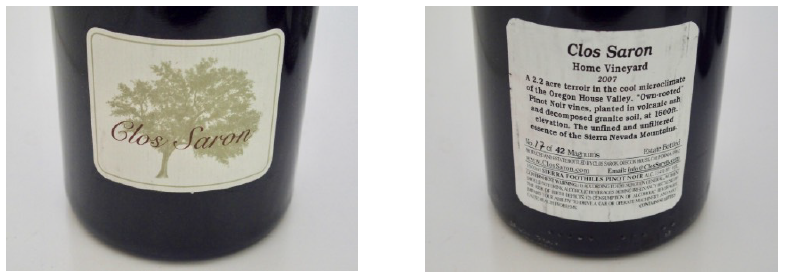
2007 Clos Saron Home Vineyard Sierra Nevada Mountains Pinot Noir 13.4% alc., #17 of 42 magnums. Unfined and unfiltered. · Moderately light garnet color in the glass. Intriguing aromas of mocha-kissed cherry, root beer and forest floor. Still very fresh and engaging in a middleweight style with an appealing earthiness. A little riper fruit profile than the 2006 vintage and less tannin. This wine really grabbed my attention, not only because of the very long finish but the Burgundian sous bois character. Should drink enjoyably for another 5-10 years.
Father John Wines: French-Inspired Pinot Noir & Chardonnay
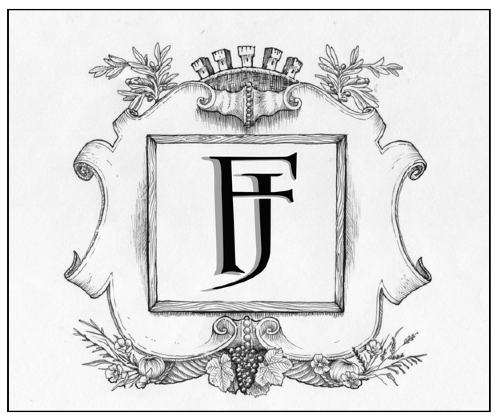
Nicholas has an impressive winemaking resume, having graduated from the world-renown Lycée Viticole in Burgundy and worked in Haute Svoie, Margaux, Maison Ilan in Nuits-Saint-Georges and Domaine Rollin in Pernand-Verglesses. Nicholas’ wines are one of the few American Pinot Noirs to be found on restaurant lists in Burgundy and his wines are especially popular with the Swiss, Belgians, Danish and English. European exports make up a significant amount of total sales. Nicholas has planted a vineyard on his family’s apple ranch located just outside the city limits of Sebastopol. The first estate-grown Pinot Noir from this site has been bottled and will be a cult wine demanding $395 a bottle. Nicholas has been particularly attracted to the potential of Northern Mendocino County, specifically the town of Comptche. He truly believes Comptche to be one of California’s next top Pinot Noir regions. Located north of the Anderson Valley, Comptche is the only California appellation that is planted solely to Pinot Noir and Chardonnay (only 1.5 acres of Chardonnay) and there are several vineyards in this region. Nicholas believes his Comptche wines rival or surpass Chambertin wines. Nicholas’ Pinot Noir wines are all 100% whole-cluster fermented with Indigenous yeasts but he typically inoculates for malolactic fermentation. A small amount of new French oak is used for aging (the Old Vines bottling reviewed below saw no new oak). The wines are never filtered. There are also a few techniques instrumental to the house style that no other producer in the world utilizes but Nicholas prefers to keep those techniques private. The limited production wines are sold through a mailing list at www.fatherjohnwinery.com. There is currently a waitlist for the Chablis (3 years) and the Vine Hill Road Pinot Noir (1 year). The Vielles Vignes (Old Vine) Pinot Noir will be available for purchase on the website soon.
2018 Father John Vau de Vey 1er Cru Chablis 12.5% alc., $85. · Light golden yellow color in the glass. Complex nose presenting with aromas of yellow apple, petrichor, kelp, and straw. Bright and clean on the palate and slightly viscous in texture, with the flavors of pear and salty apple along with a stony grip. Some length on the finish and thoroughly enjoyable. Representative of the Chablis genre from well-known producers in the $100+ price range. Score: 94
2015 Father John Vielles Vignes Mendocino County Pinot Noir 12.5% alc., $68. Sourced from a vineyard located in the Redwood Valley bench planted in the 1960s to Martini clone. Nicholas notes, “The British, including Jancis Robinson, absolutely love this wine,” and it is sold out. 100% whole cluster fermented, aged in neutral French oak barrels. · Light garnet color in the glass. The nose is whole-cluster-inspired with aromas of pie cherry, sap, burnt tobacco and sous-bois. Lighter in weight but fully satisfying with flavors of cherry, red berry and sarsaparilla framed by very fine-grain tannins and crisp acidity. An intriguing connoisseur’s wine that is beginning to take on some aged (tertiary) character. Score: 93
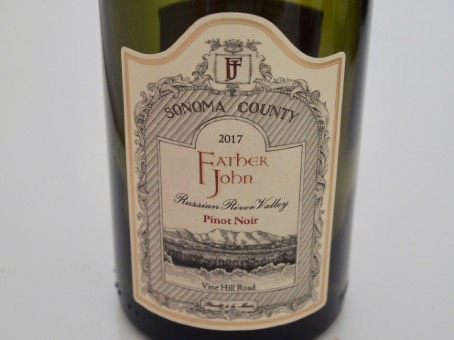 2017 Father John Vine Hill Road Russian River Valley Pinot Noir 12.5% alc., $75. Primarily Pommard clone planted in Goldridge sandy loam soil. 100% whole cluster fermented. Representative of the Chablis genre from well-known producers in the $100+ price range. · Very light ruby red color in the glass. Aromas of cherry, cranberry, burnt tobacco and sap. Mid-weight in style with a toothsome core of Bing cherry, dried herbs and a hint of stone fruits. Although on the delicate side, the wine delivers more flavor intensity than the very light color would predict. Soothing in texture with bright acidity and gossamer tannins but slightly shallow at the finish. More Russian River Valley fruit exuberance than the older Mendocino County bottling. Score: 92
Pinot BriefsWine Cooler Followup A couple of issues back I reported on my difficulties getting customer service from Wine Enthusiast when my N’Finity Pro wine cooler I had purchased from them stopped working. I chose to buy the Wine Enthusiast wine cooler because the sturdy shelving was far apart enough to accommodate larger Pinot Noir and Chardonnay bottles. However, the compressor was not as quiet as I would have liked. I spent some time reading reviews of available wine coolers online and gathering some insight into the various manufacturers. I found that most inexpensive wine coolers are made in China and customer reviews indicate one can probably expect they will last 4-5 years or less before the compressor gives out. The manufacturers only offer a 1-year warranty. I have a wine locker where I store most of my wine but need an inexpensive, relatively small wine cooler in my office to store wine that is to be reviewed as well as to be drunk. I decided on a Kalamera 24” 127 bottle Built-In Wine Cooler Fridge Single Zone Wine Refrigerator ($749.25). Most wine coolers like the Kalamera unit only provide non-adjustable shelving for Bordeaux-style wine bottles, not the larger Pinot Noir and Chardonnay bottles. The result is that the stated bottle capacity of a wine cooler is inflated if you plan to store mainly Pinot Noir and Chardonnay. With my Kalamera unit, smaller diameter bottles of Pinot Noir and Chardonnay (the minority) fit on the shelves fine. The larger diameter bottles did not, so I removed 3 of the 11 shelves leaving space for the larger bottles. One can double stack large bottles when one shelf is removed. One can store 6 magnums on the bottom shelf and 2 magnums on the top shelf (unlike the photo shows below). Magnums on these shelves will cause the center of the shelves to sag a bit. The total number of regular bottles (in addition to magnums) including smaller and larger bottles of Pinot Noir that can be stored with ease with three shelves removed is a minimum of 75 but this will vary with bottle diameters and whether some bottles are double-stacked. I chose the less expensive single zone type of wine cooler since I like to drink Chardonnay at about the same temperature as Pinot Noir (63ºF). The “built-in” type looks perfectly fine as a free-standing unit and is attractive to look at. The blue lighting feature on the inside is not great as the light is on top and when the wine cooler is full of bottles the light barely reaches the bottom half of the cooler. The best feature is the quietness of the compressor. Since I work at my computer and taste wine in my office where the wine cooler is located, this was ideal. I only barely heard the compressor when it was running. Installation only involved attaching the handle and plugging the unit in. I believe this wine cooler is fine for my needs at a reasonably good price (plus shipping was free). The Kalamara office is located in Los Angeles but the wine cooler is most likely manufactured in China.
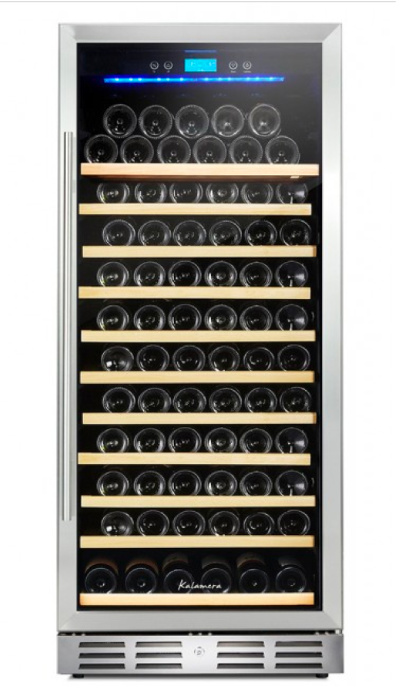 New Wine Gadget: Wine PrO2 As reported at www.wine-searcher.com, the new PrO2 device (“Proactive Decanter”) is said to “aerate wine and thereby soften tannins and make younger wines more approachable.” There have been many devices purported to aerate wine marketed in the past but have failed to capture significant interest. This device claims to offer a different approach than its predecessors. Created by engineer Tom Belcher who quit his job at a Fortune 500 engineering company to sell the PrO2 full time. It is oxygen, not air that makes decanting helpful but since air is only 21% oxygen, the decanting process takes as much as 2 to 3 hours. for maximum effect. The Pr02 device is a wand and base to which a can of pure oxygen is attached. The nozzle creates very fine bubbles of oxygen in the wine, raising the dissolved oxygen level immediately and allows the oxygen to bind with undesirable gases (ie mercaptans) found in young wines to release them. the result is that the desirable fruitiness and other characters of the wine emerge immediately. Argon gas is also provided for wine preservation. I have not used the device on Pinot Noir so cannot comment on its effectiveness. Visit the company’s website at www.winepro2.com for more information and pricing.
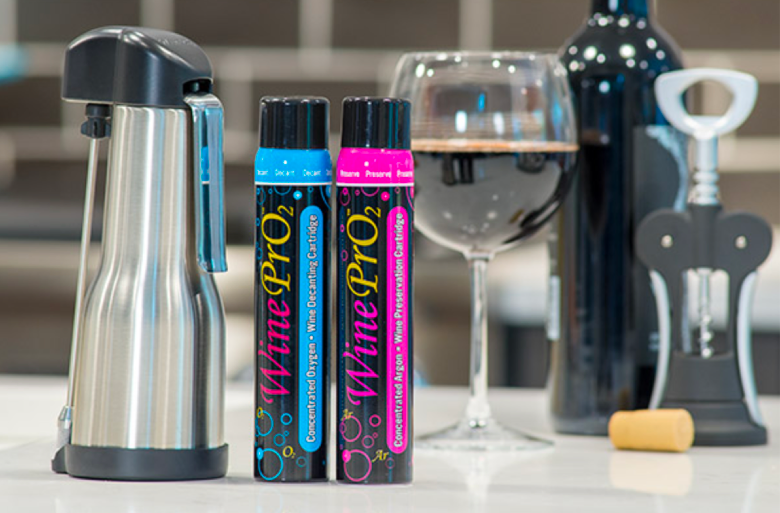 Millennials Drinking More Wine The 2021 State of the Industry Report from Silicon Valley Bank’s Wine Division found that Millennials (ages 24-39) consumed 18 percent in 2019 and 20.1 percent in 2020. Boomers (ages 56-74) are still the leading consumers of wine by a significant amount. I have two sons who are Millennials. The oldest one (41 - just in Generation X category) drinks wine on a regular basis (mostly what I give him) but although he knows a really good Pinot Noir when he encounters one, he is not fussy and really likes beer too. My other son (37) works for a Napa Valley winery and he prefers beer. Millennials tend to use social media and apps such as Vivino (47 million users) to discover wine and don’t read publications like mine with a scoring system. The 5-star rating system on Yelp is probably more appropriate as a wine rating gauge for Millennials. The wine industry is still trying to figure out a way to connect with Millennials as the Boomer drinkers are getting older and tend to drink less with age (not me). Printing Wine Reviews in Magazines Such as Wine Enthusiast is Big Business Wine Enthusiast magazine offers label packages for additional promotion for wineries that submit wines for review and scoring. Package A includes a guaranteed print placement in the magazine’s Buying Guide and a full-color label next to their review and rating, a label featured in the Advanced Buying guide Trade Email, a label featured in the Online Buying Guide and a PDF sell sheet for marketing - $1,395 for one label. Package C (“Promotional Package and Best Value”) includes all the benefits of Package A plus the label is included in the publications searchable wine database with a Buy Now button linking to their commerce site or preferred online retailer, and inclusion in one Top Shelf Email Newsletter with links - $2,495. Package D includes Social media with custom posts on the publication’s Facebook and Twitter accounts - $895. Package E includes an Enhancement Video that accompanies the wine review in the publications Online Buying Guide and promotion in a sponsored Facebook post - $595. For those wineries that can pay, their reviews become advertorials. In the November 2020 edition of the Wine Enthusiast, 187 reviews with labels appeared in The Buying Guide. You do the math. |
